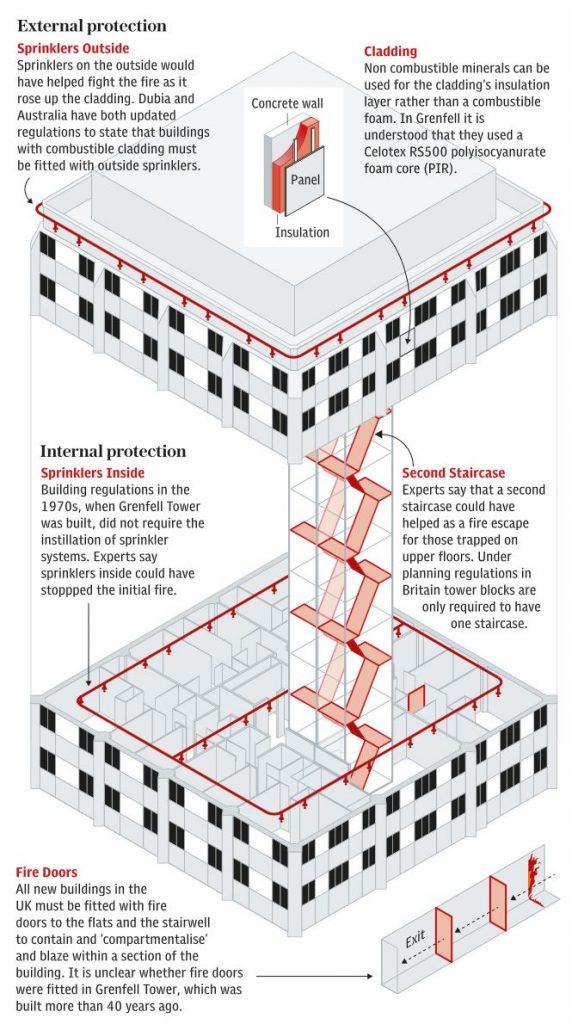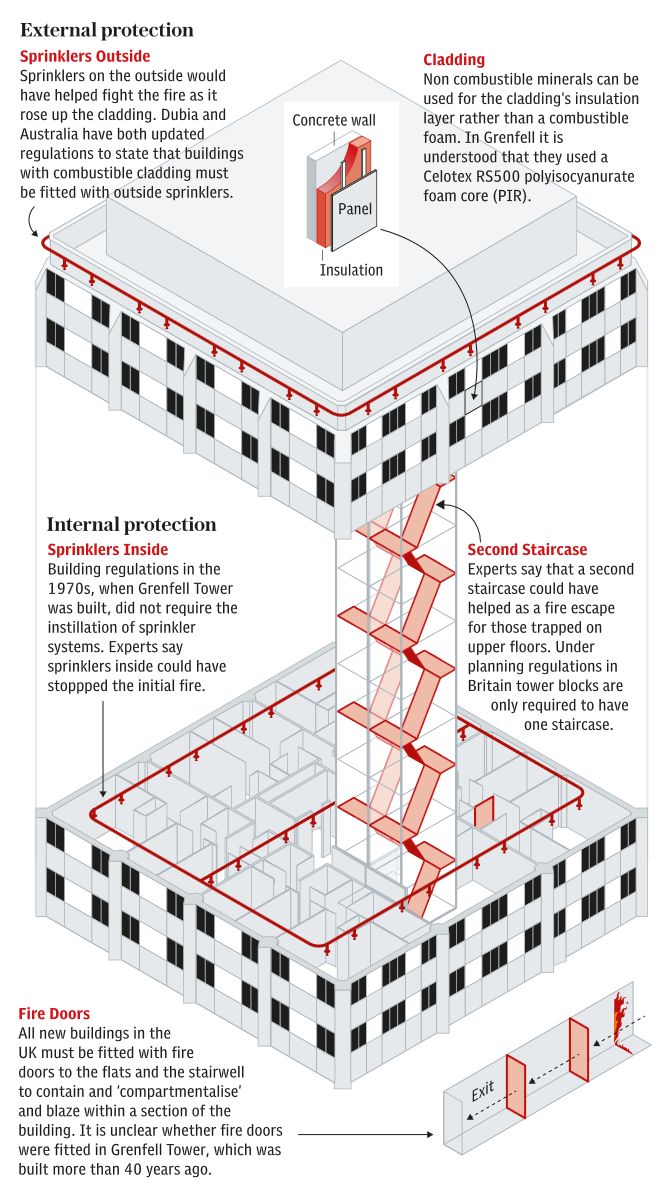 By now everyone has heard about this fire in a high-rise residential building in London, which has likely resulted in
By now everyone has heard about this fire in a high-rise residential building in London, which has likely resulted in the deaths of 58 people (combined total of those confirmed dead and still missing) and dozens of people injured. The fire, which spread quickly up the outside of the building, has left people questioning whether the “shelter in place” strategy is the safest plan during a fire.
While the exterior cladding on the building is being investigated for its contribution to the blaze, there are also news reports where witnesses are quoted as saying that the door leading to the apartment of fire origin was left open. This undoubtedly impacted the egress routes that could have enabled residents to escape from the burning building.
I have said it before and I’ll say it again (and again, and again)…fire doors between dwelling units and egress corridors must be self-closing and self-latching in order to help prevent a tragedy like this one. Considering the frequency of residential fires and the number of times an open apartment door has led to fire spread and fatalities, I can’t imagine why the requirement for the annual inspection of fire doors is not being enforced for multi-family buildings in most jurisdictions.
~~~
Eight failures that left people of Grenfell Tower at mercy of the inferno – The Telegraph
A litany of failings in building regulation and safety rules have left residents in tower blocks vulnerable for decades. Despite constant warnings from fire experts, nothing was done to improve fire-proofing standards, or even review the current situation. Here are the eight times that the victims of Grenfell Tower were let down.
~~~
Grenfell Tower fire caused by faulty fridge on fourth floor, reports suggest – The Independent
Maryann Adam, 41, lived next door to Mr Kebede at number 14. She said her neighbour had woken her up to warn her about the fire.
“He knocked on the door, and he said there was a fire in his flat,” she told MailOnline. “It was exactly 12.50am because I was sleeping and it woke me up.
“The fire was small in the kitchen. I could see it because the flat door was open. There was no alarm.”
~~~
Stay put? Deadly London fire puts scrutiny on high-rise rule – ABC News
Many residents were trapped, forcing some on higher floors to jump to their deaths rather than face the flames or throw their children to bystanders below. By Saturday, officials counted 58 people missing and presumed dead, including 30 deaths previously confirmed.
Despite that outcome, fire experts say “stay put” is still the best advice — as long as the building has proper fire-suppression protections, such as multiple stairwells, sprinkler systems, fireproof doors and flame-resistant construction materials, some of which were lacking in the London blaze.
~~~
Graphic: The Telegraph
You need to login or register to bookmark/favorite this content.






I think non combustible exterior material
Vs
Trying to protect a building with outside sprinklers. I am thinking would not work.
The developer had been ordered by the London fire brigade to install self-closing devices on near-identical buildings nearby. And they had stated that they would “speed up” installation of self-closing devices on all their buildings. Clearly they didn’t do it fast enough! Retroactive compliance, after a warning or god forbid a fatality, is not acceptable and should be considered negligent. Hi-rise developers should be expected to employ *proactive* compliance with fire and life safety codes!
https://www.theguardian.com/uk-news/2017/jun/14/towers-managers-were-reviewing-safety-after-fire-at-another-block
https://www.theguardian.com/uk-news/2017/jun/14/fire-safety-concerns-raised-by-grenfell-tower-residents-in-2012
It’s been over a decade since the British codes were updated. Too long.
And apparently the “it will cost too much” argument was victorious over “safety demands changes”
It’s interesting that fire experts state, broadly, that “shelter-in-place” is the best approach, then qualify it with “as long as” required conditions such as ‘proper fire-suppression protections’, ‘multiple stairwells’, ‘sprinkler systems’, ‘fireproof doors’, and ‘flame-resistant construction materials’ are in place AND operational.
Without reviews to ensure these qualifiers remain operational, how can “shelter-in-place” even be suggested as a broad approach to fire safety?
Just as fire detection, alarm, and suppression systems require annual maintenance and review to ensure they are functional, so to should fire doors and firestop barrier management inspections be required by fire marshals, code officials, and property casualty insurers to ensure these systems remain present and functional.
The provisions in the codes are there, yet largely ignored (except in healthcare) by AHJs. I just don’t understand why these requirements are not broadly enforced.